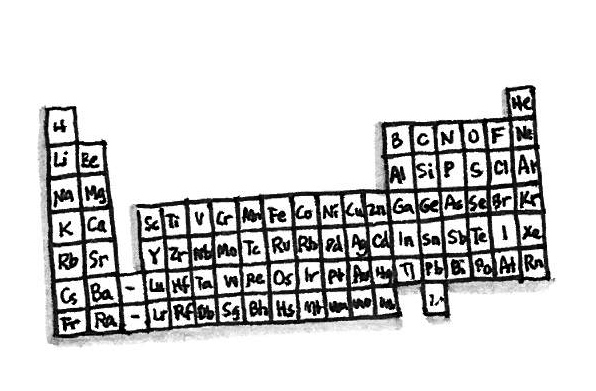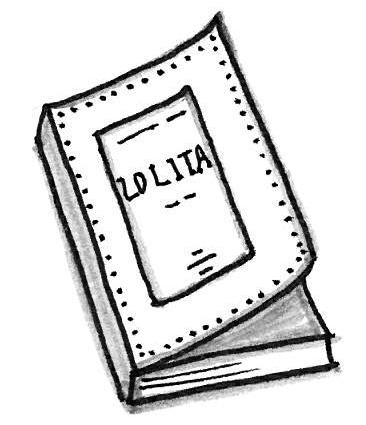What do the Table of Elements, the first IBM computer, and the novel Lolita have in common? Before they were icons of human achievement, they were card decks. Each teaches a lesson for how card decks can be a powerful tool for pattern finders, integrative thinkers, and inspiration seekers.
Before we go there, what does a card deck have to do with UX? In interaction design, card decks are useful both as design tools and as inspiration for digital experience. As design tools, interaction designers may use card decks to keep a checklist of considerations, inspire creative thinking, or conduct user research. Digital experiences themselves are increasingly mimicking the sensation of playing with a deck of cards. Facebook, Flipboard, Twitter, Trello, Tinder, and Google Now are just some of the big names experimenting with the digitization of a tactical experience we are all familiar with: a deck of cards.
If you’re looking for practical ways to experiment with decks in your own work, consider the lessons learned from the most famous breakthroughs that began life as cards.
Card Decks are Elemental
Dmitri Mendeleev was the first scientist to order the elements by atomic mass, resulting in what is now the periodic table. Mendeleev carried a deck of cards—each with an element and some of its known properties—using time on train rides to play “chemical solitaire” and look for patterns.

Lesson #1: When looking for a pattern or structure to bring meaning to complex information, break information into movable nodes and seek multiple possible configurations until the relationships within the system come into focus.
Card Decks Ushered in the Computing Age
Herman Hollerith developed a machine that could tabulate statistics by reading information encoded on physical cards through the placement of holes in a grid. Hollerith’s invention revolutionized the field of data statistics and marked the beginning of the computing age. His Tabulating Machine Company later became IBM.

Lesson #2: “Code” your individual cards in as many ways as possible, using symbols and colors to categorize information. Structure may later emerge from this metadata.
Card Decks Make for Great Reading
Vladimir Nabokov, author of many novels including “Lolita,” composed his work using an index-card-based method, assembling stories in fragments. In an interview with The Paris Review, Nabokov described his card method: “The pattern of the thing precedes the thing. I fill in the gaps of the crossword at any spot I happen to choose. These bits I write on index cards until the novel is done. My schedule is flexible, but I am rather particular about my instruments: lined Bristol cards and well-sharpened, not too hard, pencils capped with erasers.”

Lesson #3: Save your thoughts in fragments—a memorable quote, a midnight brainstorm, a crucial statistic, a sketch—to maintain a pool of content that can be assembled or reassembled for multiple possible uses. Communicating your ideas to audiences that vary in their perspectives and needs is much easier when you can rapidly pull the most relevant content or storytelling approach for each audience.
“The pattern of the thing precedes the thing”—Nabakov
What gives card decks this unique power to create new meaning in the world? The basis of visual thinking is the analysis (i.e., disaggregation) of a complex idea into “nodes”, followed by the synthesis (i.e., reintegration) of those “nodes” through “links” into a new meaningful whole. At the most basic level, cards are “nodes” in search of “links.” In personal creative practice, card decks are a powerful problem-solving tool because we often know the parts of a problem or solution, but we don’t yet know how they fit together in an insightful way. Decks are a way for us to hold those nodes in creative tension until a pattern emerges.
Many applications of cards in UX don’t capitalize on their unique qualities. To make the most of your card-based interaction design, consider the five properties and seven experiential motions of tactile decks:
Five properties of decks:
- Nodality: cards must be movable pieces
- Set: the deck represents a complete universe
- Taxonomy: the deck relies on an organizing system or common framework
- Multiple Valuable Configurations: the deck’s utility is derived from a variety of valuable configurations that encourage interaction. A deck with only one valuable configuration would be static (like a book)
- Sidedness: cards have two sides, but the sides are not visible simultaneously
When interacting with decks, users make randomizing motions and sensemaking motions.
The Randomizers:
- Shuffle
- Deal
- Draw
- Flip
The Sensemakers:
- Sort/Group/Stack
- Sequence/Rank
- Compare/Combine
As “shuffle” and “flip” give way to “tap” and “swipe” through the digitization of card-based experiences, returning to these intuitive motions and properties can guide interaction innovation. These properties that have made physical card decks an enduring sense-making tool have the power to transform digital UX by both inspiring new interfaces and equipping designers with a practical tool that may make them the next Mendeleev, Nabokov, or Hollerith.
Lead image of XPLANE Discovery Deck.







